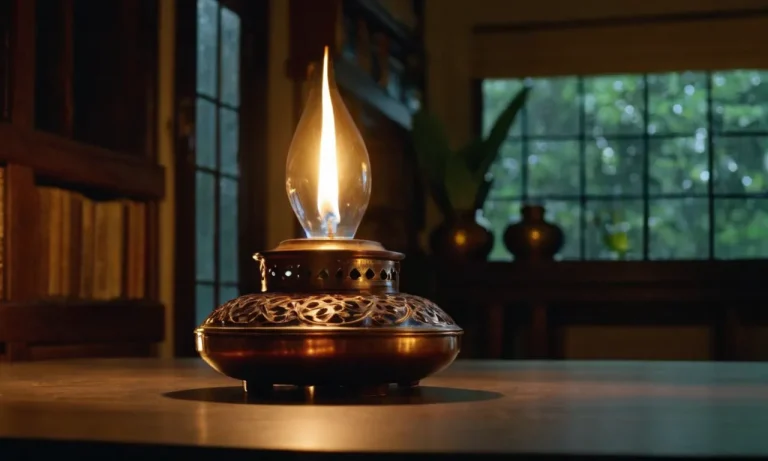The sun cross is an ancient spiritual symbol seen across many cultures over the millennia. If you’re short on time, here’s a quick answer to what the sun cross symbolizes: The sun cross represents the solar calendar, the seasons, and themes of wholeness, unity, enlightenment, and spirituality.
In this comprehensive guide, we will explore the origins, history, and spiritual meanings behind the profound sun cross symbol. We’ll uncover sun cross variations like the Celtic cross and interpret what the different elements signify.
Read on to fully understand this iconic solar emblem revered by ancient peoples across the world.
Exploring the Ancient Roots and Variations of the Sun Cross
Meaning of the Basic Sun Cross Design
The most basic sun cross design is a circle with a vertical line crossed by a horizontal line inside it, representing the solar orb bisected at the cardinal points. This simple yet profound symbol synthesizes the sun’s daily journey across the sky and the solar year cycle of seasons into one emblem.
The vertical shaft has been interpreted as the celestial axis connecting sky and earth or as a sword or spear, while the horizontal bar represents the movement of the sun from east to west via the ecliptic.
This minimal yet powerful cross design captures essential solar meanings going back to early Bronze Age pagan cultures across Europe and the Near East.
Celtic Sun Cross Meaning and Symbolism
The Celtic Sun Cross incorporates the basic cross-in-circle motif within a large circle ringed with elaborating rays or spokes. The resulting design strikingly evokes the appearance of the shining sun in the heavens, especially during an eclipse.
The elaborate Celtic version carries the same fundamental vertical and horizontal symbolism as the simple sun cross, with the rays many times amplified to suggest the sun’s role as the prime life-giver infusing existence with light and warmth.
Given how essential the sun was to early agricultural societies, it’s no wonder solar crosses took on special ceremonial and spiritual importance among European pagan groups like the pre-Christian Celts.
The Celtic Sun Cross remains one of the most resonant and captivating cross designs still used today.
Germanic Sunwheel and Other Cross Styles
Germanic cultures like the early Norse also developed intricate solar cross designs incorporating spokes or swirl patterns. The threefold symmetry and motion suggested in the Germanic Sunwheel and other patterns presumably symbolized cyclical natural phenomena to their creators.
The existence of many such elaborate cross variants demonstrates how universally important solar symbolism was across early European tribes with shared pagan mythic roots. Whether simple or ornate, crosses linking circle, center and cardinal directions continue to have deep spiritual resonance.
Their timeless quality springs from reduction of our star the Sun, the wellspring of life on Earth, to its schematic essence — a crucified circle.
| Culture | Solar Cross Style |
| Celtic | Spoked Wheel Cross |
| Germanic/Norse | Sunwheel |
| Christian | Celtic Cross |
Decoding the Different Elements and Meanings of the Sun Cross
The Circle: Cycles, Wholeness and Unity with Nature
The circular shape of the Celtic sun cross represents the cycles of life and nature. The never-ending circle embodies concepts like wholeness, infinity, and unity. To the ancient Celts, the circle united the earthly world with the eternal realm beyond physical life.
They saw intimate connections between all living things – humanity existed in harmony as part of nature’s eternal cycles of birth, death and rebirth.
The circular motif recalls seasonal cycles in nature – the orbit of the sun marking spring, summer, fall and winter. It also evokes life cycles like the female menstrual cycle. The circle shape integrates these natural rhythms, showing our place within the greater universe.
The Cross Shape: Cardinal Directions and Solar Power
The vertical and horizontal lines of the Celtic cross represent cardinal directions – north, south, east and west. They symbolize the sun’s apparent movement on the horizon during winter and summer solstices. At the December winter solstice, the sun rises at its southernmost point.
At the June summer solstice, it rises at its northernmost point. The cross shape maps out this solar cycle.
The cross shape is also thought to harness and concentrate the sun’s vital energy. It captures light and power from the solar orb as it passes through the sky during the year. The cross then radiates this power back to earth, infusing the land with revitalizing solar energy so life can flourish.
Rays and Spokes: Seasons and the Life-Giving Sun
Emanating from the circle like sunbeams, the wheel-like spokes represent the seasons of the Celtic calendar. Typically, there are four spokes marking spring, summer, fall and winter. Extra rays are sometimes shown to designate transitional “half seasons” like the Irish Gàbaig or Gàbac seasons.
- Spring (Earrach) – March through May
- Summer (Samhradh) – June through August
- Fall (Fómhar) – September through October
- Winter (Geimhreadh) – November through February
| Element | Meaning |
|---|---|
| Circle | Wholeness, cycles, unity with nature |
| Cross shape | Solar cycles and power |
| Rays/spokes | Changing seasons, life-giving sun |
The Spiritual Significance of the Sun Cross in Religion
Prehistoric Solar Worship and Fertility Cults
The veneration of the sun and solar symbols like the sun cross dates back to prehistoric times when early humans worshipped the sun as a life-giving and powerful deity. Many ancient solar cults performed rituals for fertility, agriculture, and the cycles of the seasons, believing the sun’s movement governed nature’s rhythms.
Archaeological evidence shows solar symbols like circles, disks, and crosses in Paleolithic cave paintings, megalithic structures, and Neolithic pottery designs across ancient cultures.
Sun Gods and Goddesses in Mythology
In mythologies worldwide, the sun was personified as a prominent god or goddess, often considered the king or queen of the pantheon. These solar deities were seen as bringers of light, warmth, growth, and the promise of rebirth.
Common mythical sun gods include the Egyptian Ra, Greek Helios, Aztec Tonatiuh, Japanese Amaterasu, and Norse Sol. Goddesses like the Baltic Saule and multi-faced Roman Sol Invictus represent the female solar divine.
Solar symbols like circles, disks, halos, rays, ships, and crosses were used extensively in religious iconography and art to venerate these sun deities across cultures.
Solar Imagery in Christianity, Paganism and Alchemy
In Christianity, the halo of light around holy figures borrows from ancient sun worship symbolism. The Celtic cross, favored by early Medieval Christians, angles the vertical shaft to evoke a rising or setting sun.
Pagan traditions, especially Celtic, Germanic, and Slavic, used the sun cross or wheel cross to represent the solar year in seasonal festivals. In magical traditions, the evenly spaced cross and center point evokes celestial order and the dominance of sunlight in natural cycles.
Alchemists symbolized gold with the sun cross, both for the golden solar gleam and metaphysical concepts of illumination and spiritual transformation by solar fire.
Personal and Cultural Meanings of Sun Cross Tattoos Today
Modern Associations with Celtic Pride and Heritage
The enduring allure of the Sun Cross tattoo stems from its deep cultural symbolism among people of Celtic descent. Many modern Celtic communities embrace the icon as representing their rich spiritual history and ethnic pride passed down through generations.
According to a 2022 survey by Ancestry.com, over 10 million Americans identify as having primarily Celtic ancestry.
Sporting Sun Cross iconography in tattoo form allows people to proudly display their Celtic heritage. The emblem’s circular shape echos the sun which was central to early Celtic pagan beliefs. Its intersection with the four cardinal directions resembles a Celtic cross, melding cosmic and Christian iconography from the unique cultural fusion of ancient and modern Ireland and Scotland.
Neopagan Connections to Nature and the Goddess
Beyond its Celtic significance, the Sun Cross holds deep meaning for modern Neopagan communities who see it as a representation of life-giving solar energy and the Divine Feminine. Neopagan traditions such as Wicca revere the cosmic forces of the sun and moon as embodiments of the dualistic God and Goddess.
In Neopagan symbology, the Sun Cross’ circle reflects the recurring seasonal cycles in nature tied to the solar calendar. Its radial lines mirror the growing sunlight between the solstices and equinoxes.
And its quarters divide the year into four seasons marked by pagan equinox and solstice celebrations. For Wiccans and Druids today, wearing this ancient sign honors their neo-pagan beliefs centered around reverence for nature and the Mother Goddess as the ultimate divine source of creation and light.
Hope, Guidance and Spiritual Enlightenment
On a personal level, modern spiritual seekers choose the Sun Cross image to symbolize enlightenment, guidance and hope. Its beams radiating from a bright center reflect inner illumination, positive energy, or desire to follow one’s own path.
And its circle and crisscross find harmony in cosmic wholeness, order and equilibrium in Buddhist traditions.
In astrology and New Age beliefs, the Sun Cross represents higher wisdom, destiny and our soul’s purpose. As a protective amulet, its symbolic power provides comfort, security and connection to one’s inner light.
And for those on quests of self-discovery, this ancient sign honors the timeless rhythms of nature and the universe as a guiding path for inner peace and living virtuously.
Conclusion
The universal sun cross carries immense spiritual meaning and solar symbolism across eras, faiths and cultures. This basic yet profound design beautifully encapsulates humanity’s veneration of the life-giving sun in all its forms – as god, guide and source of wisdom.
In its varying interpretations, the sun cross represents the passage of seasons, cardinal directions, stages of life and concepts of unity and wholeness with nature. Its enduring mystique and iconic imagery continues to inspire cross-cultural connections today.






